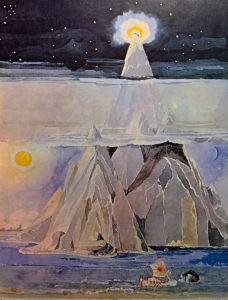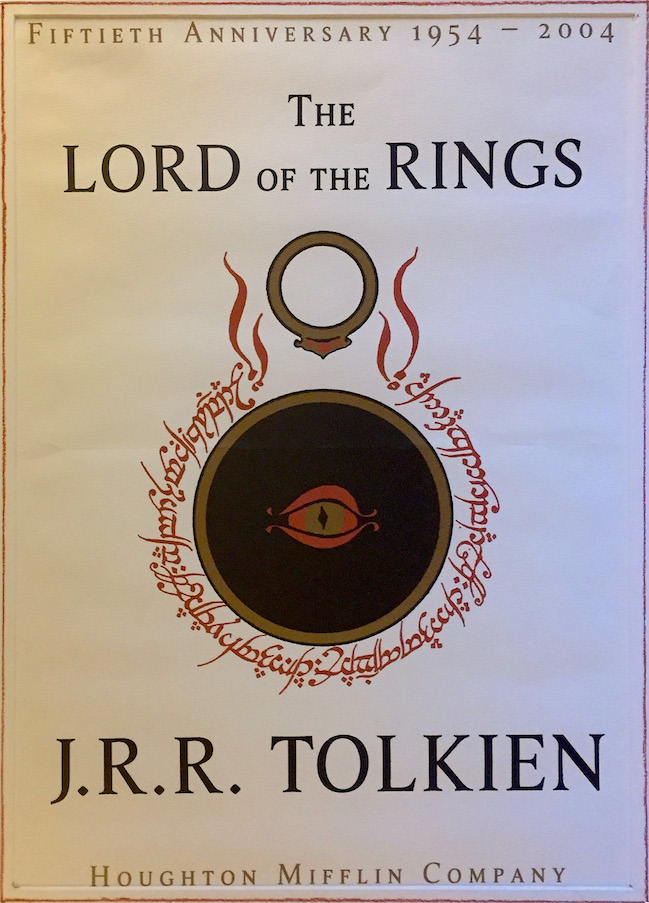Purpose

Hello and welcome to TolkienBooks.US! The objective of this site is to show pertinent details for every major work by J.R.R. Tolkien that has been published in the United States. Virtually every entry provides a reference to the prominent bibliographic sources presently available: J.R.R. Tolkien: A Descriptive Bibliography by Wayne G. Hammond with Douglas A. Anderson and The Tolkien Collector magazine by Christina Scull. The basic layout of the site owes a great deal to Neil Holford’s TolkienBooks.net, currently the most thorough Tolkien bibliographic website online. Whereas TolkienBooks.net is devoted to listing all British editions of Tolkien’s writings, TolkienBooks.US aims to list American editions and is restricted to Tolkien’s principal works along with a handful of other related entries.
About this Site
The main function of TolkienBooks.US is to document the printing history of each book included. To support this, pictures of copyright pages are provided (when available) for the first and last printings of each edition (as well as for any other noteworthy printings). For the purposes of this site, I have used the term ‘edition’ somewhat loosely, finding it convenient to label each notable variation of a book (especially cover changes) as a separate edition (keeping in line with TolkienBooks.net). Being that this site focuses on U.S. publications, I have used typical American spelling and terminology as opposed to British (which would normally be more fitting in dealing with a British author). For example ‘printing’ is used in place of ‘impression’ as is standard in the U.S. (though these two terms are used interchangeably when necessary). The ‘copyright page’ always refers to the verso of the title page. The ten digit ISBN (International Standard Book Number) is always given (where applicable) while thirteen digit ISBNs are also provided for more recent publications. Although the use of the thirteen digit ISBN began in 2007, I have included it for several earlier entries as well in order to offer a more thorough search function. Generally speaking, the ISBN-10 should be used when searching for items published before 2007 and the ISBN-13 should be used for items published after 2006. A publisher’s number (PBN) is given where no ISBN is available or where applicable. The number of pages is recorded in each entry and includes blank leaves. Content prior to page 1 (using the book’s internal page count) is indicated with roman numerals. Brackets are used to account for pages that are unnumbered within the book’s internal page count. The recommended retail price (RRP) is noted in most entries and referred as ‘jacket price’ when a priced dust-jacket is present.
Relevant typesettings of each edition have been noted. Being that nearly all corresponding U.K. editions of the books on this site have primacy over the U.S. editions, many pages include a link to a TolkienBooks.net entry to show the origin of the typesetting. Recent publications not yet listed on TolkienBooks.net are underlined with no link.
Although I have attempted to be as accurate as possible throughout the site, there are areas in which I was unable to find or verify a piece of information within an entry. I have used question marks in areas of uncertainty but for the most part have only given data that I could confirm (for example, many editions will state ‘At least x printings issued’ where ‘x‘ is the most recent printing I was able to find). Needless to say, if anyone is willing to share information that can improve upon or correct anything on this site (or willing to help out with tracking printings), I would be very grateful. That goes as well for basic site issues including dead links, trouble navigating the site, etc.; please let me know.
This is a nonprofit, educational website; images copyrighted and owned by the Tolkien Estate, et al. qualify as fair use under copyright law in the United States of America.
Tolkien’s U.S. Publishers

Since The Hobbit was published in 1938 (in the U.S.), J.R.R. Tolkien’s works were continually released by the Houghton Mifflin Company (Houghton Mifflin Harcourt since 2007) until 2021 when Rupert Murdoch’s News Corp. purchased HMH’s book-publishing division (News Corp. already owned Tolkien’s British publisher: HarperCollins Publishers). From July 7, 2021 the Mariner Books imprint was used for all publications (formerly reserved for trader paperbacks only). In 1965, Ballantine Books took up duties for mass market paperback publications in America (later using their Del Rey imprint). In 1973, Ballantine Books was bought by Random House (currently a division of Penguin Random House). As far as I am aware, there is very little extant information regarding the printing history of Tolkien’s Ballantine editions. The dates listed on these books’ copyright pages prior to 1993 were not always accurate and it should be noted that where publication information was otherwise unavailable, I have defaulted to using these dates. To further confuse matters, it was not uncommon for printing numbers to be skipped. For example, the 1986 Ballantine Edition of The Fellowship of the Ring skips from the 7th to the 9th Printing. I have surveyed as many copies as possible (in this specific instance I have seen more than 50 copies to date) in order to determine if the printing is scarce or if it was in fact never actually printed. In such cases, and only when enough data is available, I have used my own judgement to establish if the non-existence of a printing can be conceded. And though at all times I have erred on the side of caution, I accept that surely there are printings I have not yet seen. Also to be noted: “It is possible that some entire printings were sold to book clubs or to firms that supplied their own covers. These latter exist only in public or school libraries” (Richard E. Blackwelder, “The Ballantine Books Hobbit“, The Tolkien Collector, 1993, Issue no. 3, p. 21). To this all I can say is that most printings not noted on this site may at the very least be scarce (though not necessarily valuable) and that I will continue searching for any missing data.
Research
The information included in this site comes from a variety of sources including the archives of Houghton Mifflin Harcourt and the correspondence kept at the Houghton Library at Harvard University. Most detail however is derived simply from studying and cataloguing as many editions and printings as possible over the course of several years. The vast majority of data here can be ascertained simply by having the relevant book in hand. The photos on this site were predominately taken from my personal collection.
This is my first attempt at a project of this sort as well as my first time building a website. I beg that those with similar interests take this into account and forgive any errors or oversights.
Value
For those looking to determine the value of a particular edition, I’m afraid this site will not help you. It may be useful to search for ‘Sold listings‘ on eBay.com to see if a similar copy has recently been purchased. As is so often said, a book’s value is determined by, more than anything else, the amount someone is willing to pay for it at the time of sale. Very few collectible books have a permanently set value and the demand for Tolkien often fluctuates. An excellent resource for these sorts of questions is the Tolkien Collector’s Guide, whose message board is a great place to ask other collectors for advice.

Thank You
As mentioned above, I owe much to Neil Holford of TolkienBooks.net for his encouragement and generosity in allowing me to emulate his site’s layout. I would like to give a big thank you as well to Kelly at The U.S. Tolkien Guide for her continued assistance and goodwill. Those interested in U.S. editions of Tolkien’s works will find a considerable amount of very useful information there that is not mentioned on this site. I’d like to thank those at Houghton Mifflin Harcourt and Susan Steinway in particular for being so charitable with her time and allowing me access to HMH correspondence files. Thank you to the helpful employees at Penguin Random House. More personally, thank you to Steven Frisby for his kind words and helpful advice, Jason Silverman for offering his expertise and Jason Press for his substantial help in building this site. For continued support and assistance, my thanks and appreciation to Lance Schnatterly, Bill Sutherland and Joseph Scotti. I would also like to extend my gratitude to Douglas A. Anderson for graciously sharing some of his valuable research notes with me. Lastly, I am grateful to Wayne G. Hammond and Christina Scull for their encouragement and continuously inspiring work.
If you are interested in offering your support to this website, please consider donating; even a small amount goes a long way in helping to cover operating costs. If you are able to assist with the research for this site, that would also be appreciated. Donate / Contact